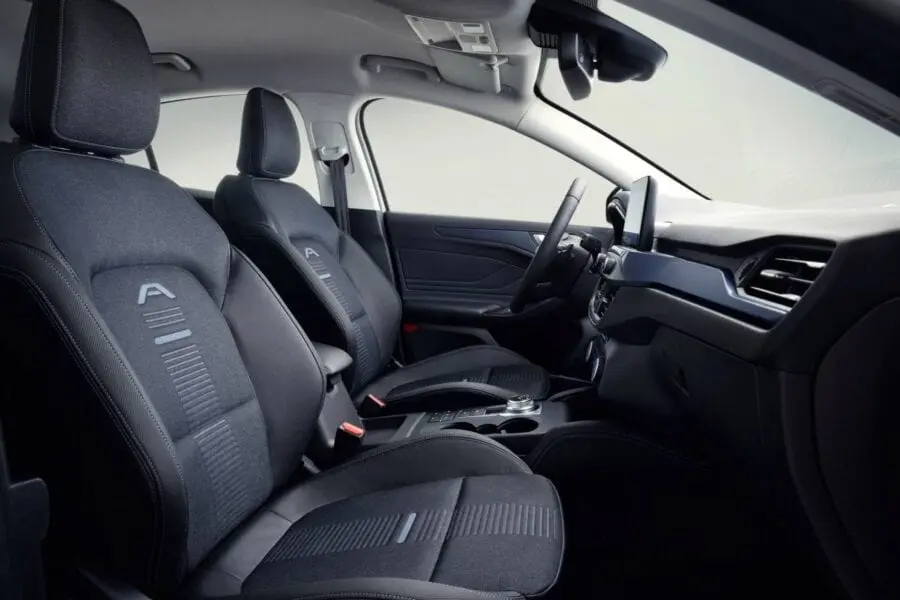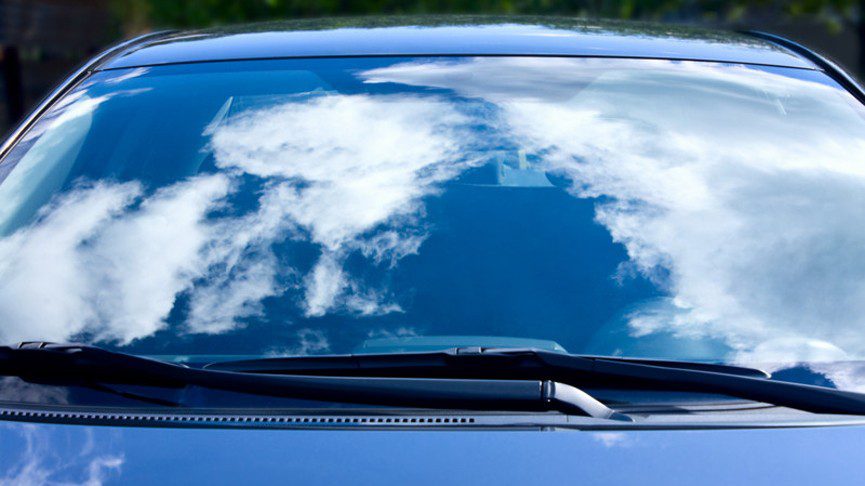
Varieties of glass for a car
Content
People rarely think about the peculiarities of car glass until the windshield or side glass breaks or a crack appears on it. Then there is a need for either repair or replacement of the part.
Few people think about it, but car parts manufacturers have created special products that can be freely classified as passive safety. When a car is involved in an accident, the glass shatters into small pieces, which prevents deep cuts.
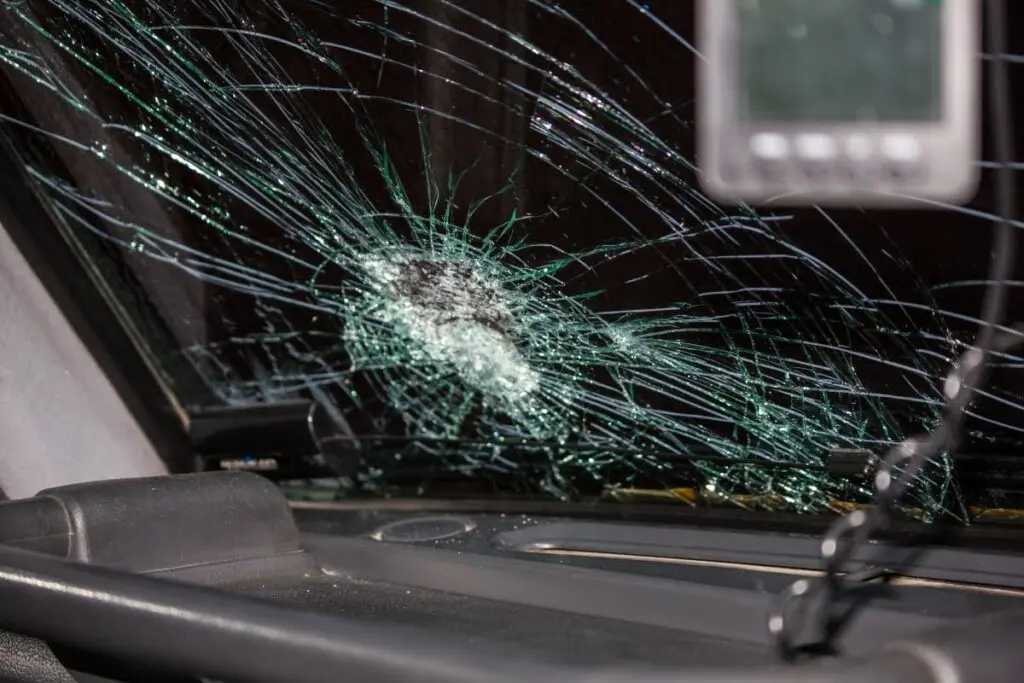
Consider how they differ from conventional glass used in insulating glass units for homes and offices. Let's also see how the different types differ from each other.
Types of car splits
For cars, manufacturers produce the following types of glass:
- Single layer;
- Two-layer;
- Three-layer;
- Multilayer.
There is also a tinted version that is designed to absorb ultraviolet and infrared rays from sunlight.
Single-layer glass - "stalinite"
These are ordinary glasses that have undergone a special tempering process. The peculiarity of such heat treatment is that a constant compressive stress is created on the glass surface.
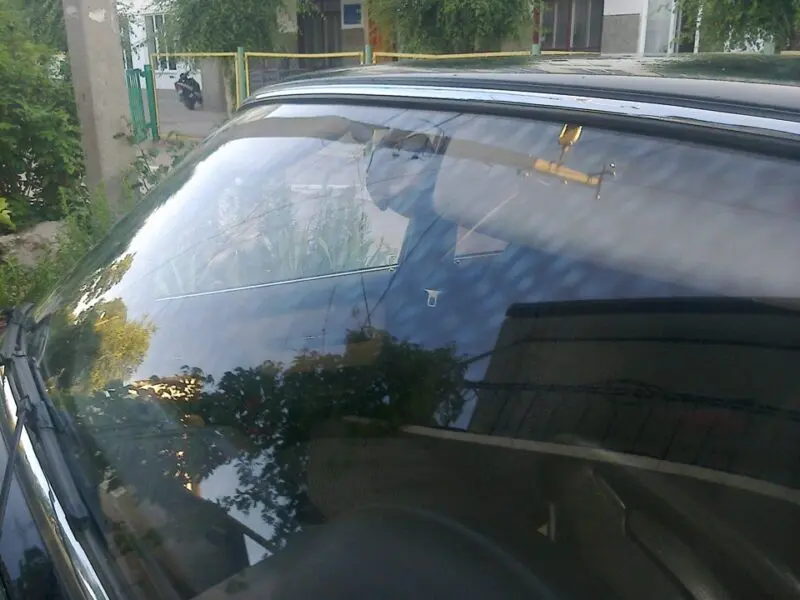
This tempering technique makes the glass resistant to wear and tear. Compared with the conventional analogue, which is used in domestic conditions (in the house or in the office), this element is five times stronger. Due to the constant mechanical stress present on the surface of the product, during a strong impact, it shatters into pieces with blunt edges, which reduces injury.
This modification is mainly installed in the side or rear window.
Double-layer glass - "duplex"
In this modification, the manufacturer uses thin transparent plastic together with glass. The advantage of such products is that, when destroyed, the fragments do not fly away so much, which further increases safety.
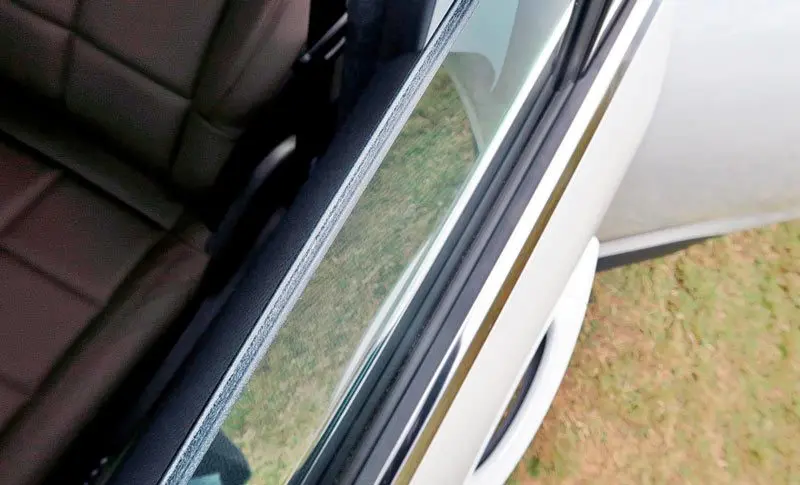
Previously, this material was used when various types of windshields were made. Due to the fact that one of the layers deteriorated under prolonged mechanical stress (using a coarse rag to clean the window), visibility is distorted. This is especially strongly felt in the dark, when the headlights of an oncoming car are shining. For this reason, such products are rarely used in transport. They were quickly replaced by "triplexes".
Three-layer glass - "triplex"
In fact, this is an improved view of the previous modification. For the manufacture of three-layer glasses, two balls of thin glass are used, between which a transparent film with an adhesive base is used.
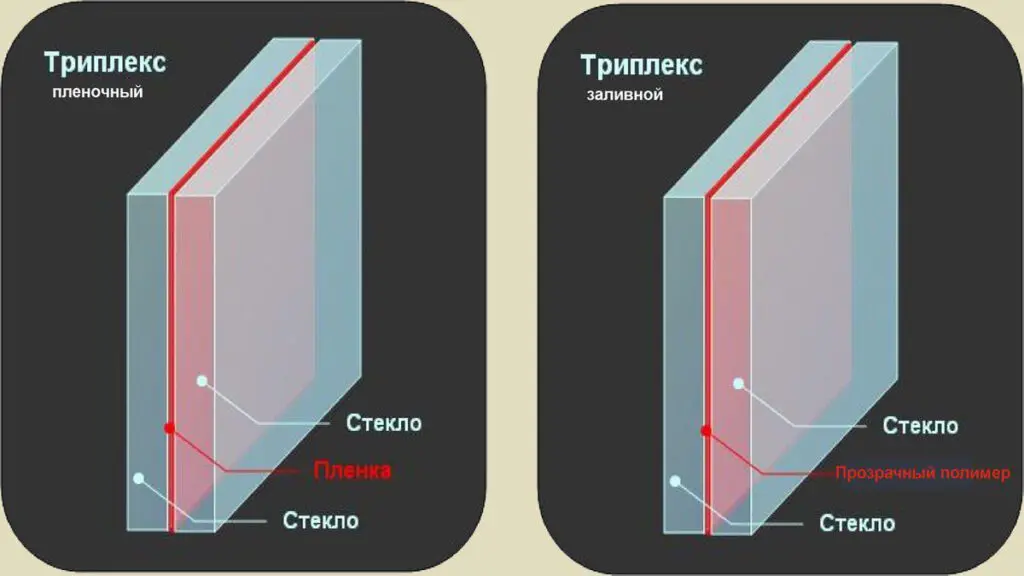
Depending on the type of glass, the interlayer can be tinted or simply coated with a filtering agent that traps ultraviolet light. The advantage of such a material is its strength. During a strong impact, most of the small fragments remain on the sticky film.
High quality of the product, as well as reliability, allow the use of the material on the windshield. In luxury cars, this type of glass can be used on all windows.
Laminated glass
This is the next step in the evolution of safe car glass. In such models, there will be several layers of glass, between which a polyvinyl butyral film is glued. It is worth noting that such an innovative development is extremely rarely used due to its high cost.
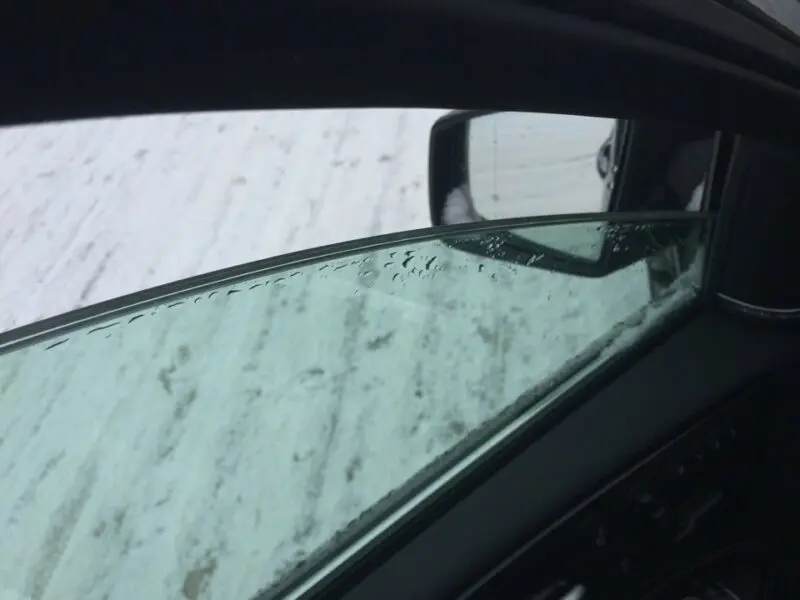
Most often, a car with a small reservation will have such glass. They are also installed in premium car models. The main function of such multi-layer elements is to reduce the penetration of external noise while driving.
Types of windshields according to the manufacturing method
During the movement of the vehicle, the main load from the oncoming air flows is on the windshield. For this reason, special attention is paid to the manufacture of these types of glass. Also, the aerodynamics of the car depends on the quality and location of the windshield.
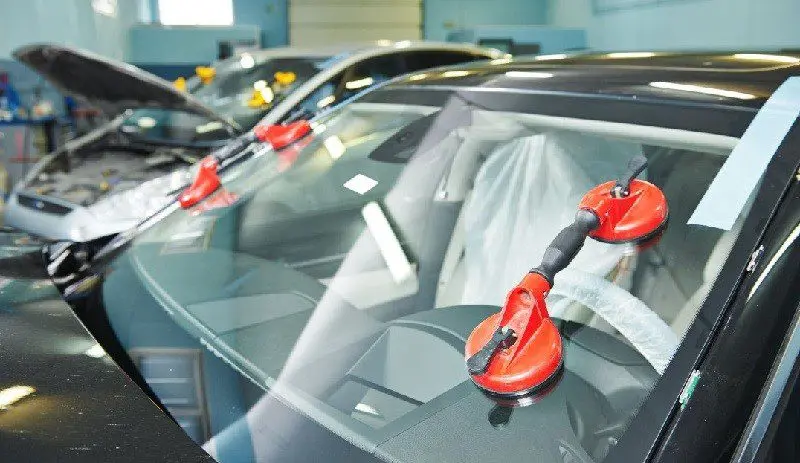
Since the windshield is facing the main load, it is more practical to make it from triplex or multi-layer modification. This will ensure maximum safety for the driver and front passenger in the event of an accident.
For the rest of the windows, you can use any modification that was mentioned a little earlier.
Types of windshields depending on their additional functions
To make it easier to decide on the model of the windshield, you need to take into account what it was like before. So, if the on-board system of the car is equipped with a signal receiver from the rain sensor, then the new element must necessarily have this sensor.
Further, for greater comfort, it is better to purchase a modification with UV protection or at least with a tinted strip at the top. This element will serve as a sun visor, but will not obstruct the traffic light (especially if the intersection is not equipped with a duplicate signal).
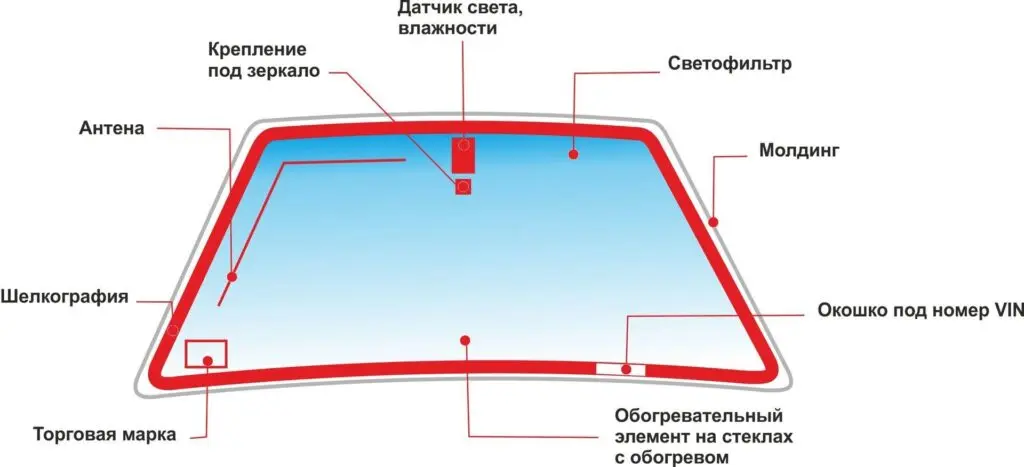
A little further, we will consider the additional functions that windshields may have. But first it is worth finding out what the special marking means on each element.
What does marking on car windows mean?
The symbols used by the auto parts manufacturer can tell a lot about the vehicle being bought by hand. For example, the seller claims that the car was not involved in the accident. If the labels on all the elements match, then most likely this is the case (a minor accident may not affect the windows).
The marking on one of the windows may differ from the symbols on another similar part, for example, if it is badly worn out. This can be from the driver's side, when it is lowered / raised more often, and therefore the former owner decided to replace it before the sale.
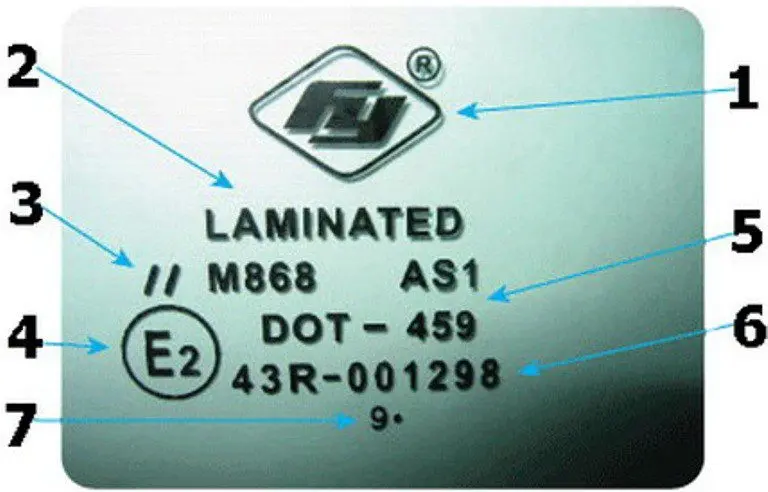
Using the example of one of the elements (in the illustration), consider how to read these designations:
- This is the company logo. Sometimes the manufacturer also indicates the make and model of the machine in this field.
- Auto glass type - Laminated or Tempered. In the first case, it is a laminated product, and in the second, it is a hardened product.
- The field with Roman numerals indicates the type of auto glass. I - reinforced frontal; II - standard with lamination; III - special wind turbine with additional processing; IV - a part made of durable plastic; V - these will be side auto glasses with a transparency of less than 70%; V-VI - reinforced double auto glass, the degree of transparency of which is less than 70% (if this index is absent, it means that the transparency coefficient will be at least 70%).
- The circled E is the country certification code. Not to be confused with the country in which the part is manufactured.
- DOT inscription - compliance with American safety standardization; the value of M is the production code of the company; AS1 - compliance with GOST and the standards of the American Department of Security, with regard to the coefficient of light transmission (not less than 75 percent).
- 43R - European safety standardization.
- The numbers after the symbol are the date when the product was created. Sometimes the automaker uses not numbers, but dots (the month is indicated) and asterisks (the year is indicated). There are companies that do not believe that this information should be indicated, since such products have no shelf life.
Here is a small table of country codes in which the part has been certified:
| code | country | code | country | code | country | code | country |
| 1 | Germany | 2 | France | 3 | Italy | 4 | Netherlands |
| 5 | Sweden | 6 | Belgium | 7 | Hungary | 8 | Czech Republic |
| 9 | Spain | 10 | Serbia | 11 | England | 12 | Austria |
| 13 | Luxembourg | 14 | Switzerland | 16 | Norway | 17 | Finland |
| 18 | Denmark | 19 | Romania | 20 | Poland | 21 | Portugal |
| 22 | Russia | 23 | Greece | 24 | Ireland | 25 | Croatia |
| 26, 27 | Slovenia and Slovakia | 28 | Belarus | 29 | Estonia | 31 | Bosnia and Herzegovina |
| 32 | Latvia | 37 | Turkey | 42 | EC | 43 | Japan |
Some modifications of auto glass may have additional symbols:
- The ear or "Acoustic" refers to soundproofing properties;
- Solar inscription - protection from solar energy heat;
- IR Symbols - Automotive glass has UV and IR protection. Of course, this energy is not completely blocked, as with athermal tinting, but almost 45 percent of solar energy is either reflected or dissipated;
- The Chameleon inscription indicates the ability to automatically dim when changing lighting conditions outside.
Additional properties of auto glass
As you know, glass in a car is designed to protect the driver and passengers from the whims of nature, as well as from strong wind currents while driving. There is a lot of pressure on the windshield because it helps streamline the vehicle. Thanks to this, the transport does not consume a large amount of fuel, and everyone who is in the cabin does not experience discomfort.
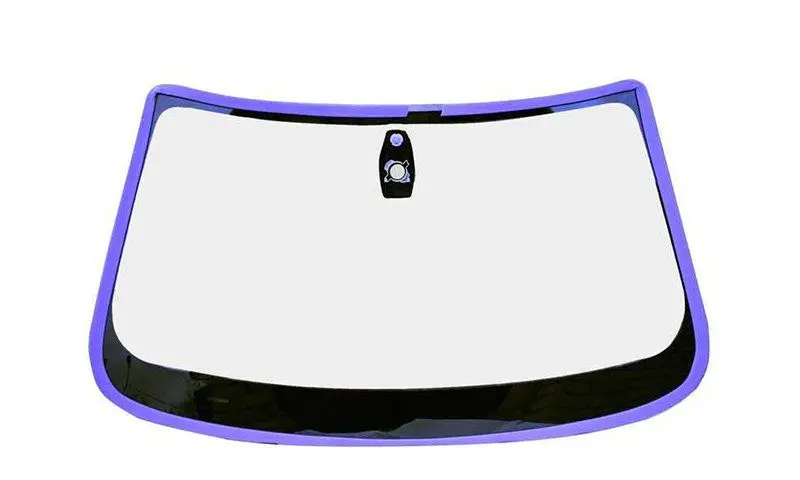
In addition to the basic functions, auto glass can have the following properties:
- Fully transparent for maximum visibility;
- Have factory tinting. Basically, the shade is insignificant so that the glass can pass the transparency control (for details on tint layers, see in another article);
- Have a sun visor that looks like a dark strip;
- Equipped with athermal layer (UV reflective film). This modification is designed to prevent excessive heating of the car interior;
- Soundproofed. Most often these will be side windows, since the more layers in it, the worse the visibility;
- With a heating zone. There are models that accelerate the heating of the surface where the wiper is located. More expensive options heat up completely. This option will be especially important in winter, if the car is constantly parked in an open parking lot. Most rear windows have a special film with a heating element, which allows you to melt snow on the glass in a short time, and also eliminate fogging;
- In luxury cars, a sensor is installed on the windshield that reacts to changes in light and when it is raining. The on-board system captures signals from it, and activates the wipers or changes the headlights;
- May have a built-in loop for better radio reception.
In most cars (even budget models), "Stalinites" are used on the side windows, and "triplexes" are used on the front and rear. They are of high quality and have established themselves as quality products.
Here is a short video on which windshield to choose:
